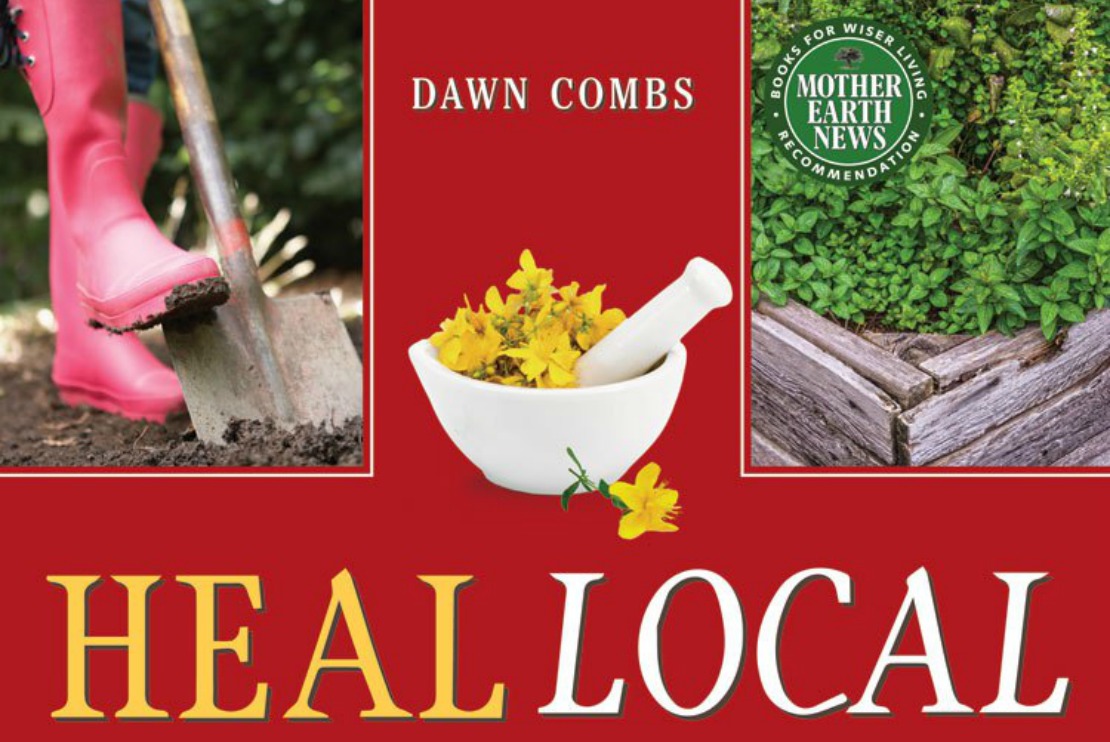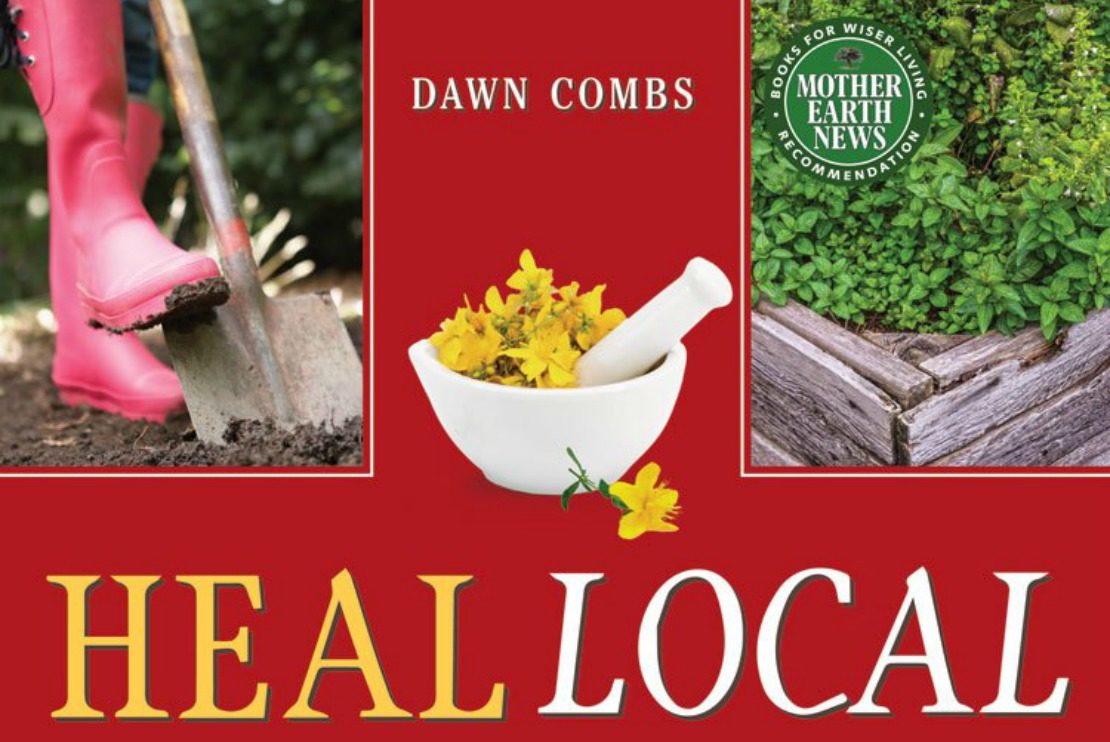
Heal Local: 20 Essential Herbs for DIY Home Healthcare
Don’t miss our Heal Local book giveaway! See details at the end of the post!
It was just a matter of time before the popularity of the local food movement expanded its influence to herbal medicine. Just like food, locally sourced herbal medicine brings something to the table – or the medicine cabinet, in this case – that is just as important as its medicinal benefits: connection with our local ecosystem. Call this je ne sais quoi, call this terroir, or call this earth medicine – regardless of how we describe it, it feeds us in a way that is intangible yet real, inexplicable but needed.
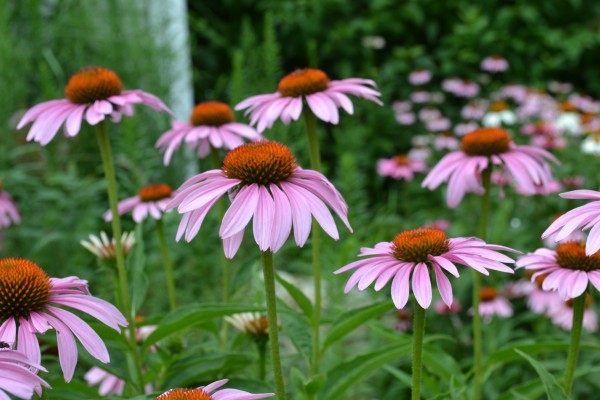
Local Plants Build and Heal
In her book Heal Local: 20 Essential Herbs for Do-it-Yourself Home Healthcare, herbalist Dawn Combs presents a rousing case for local medicine and encourages the use of locally sourced and/or homegrown herbs as the basis of the home apothecary. As with local foods, the reasons are many: from knowing how the herbs are grown and harvested so we can have confidence in their efficacy as healing allies; to reconnecting with the land that supports us and participating in the rebuilding of human community and local economies; to walking our sustainability talk. If we are really serious about “reducing our footprint,” local medicine needs to become a part of the conversation. The beauty is that plant medicine’s influence reaches beyond easing our health ailments and our environmental impacts; it spills over into our daily lives, enriching our experiences and deepening our roots as we connect with the plants, the land, and the farmer down the road.
I have to say I really liked the author’s balanced viewpoint on the intersection between herbalism and modern allopathic medicine, in that it is not an us versus them debate. To fully tend to our wellness and be truly sustainable, we all benefit from a partnership between these systems of medicine. Not only that, but taking back responsibility for our own health and educating ourselves about how to tend to our daily wellness needs not only empowers us and improves our health, it also relieves some of the burden on the healthcare system so doctors can turn their attention from treating every last cold and flu that comes through the door to diving in deeper with patients who truly need medical intervention.
DIY Home Healthcare with Local Plant Medicine
While the book is part call-to-action, it is also in large part a practical guide to preparing and administering herbal medicines. As the author describes, the book began as a guide for her husband so he would know what herbs to give to his family when she either wasn’t around or was the patient herself. She has chosen twenty “essential” herbs – both wild and cultivated – that grow locally to her farm in Ohio, profiles their medicinal actions, potential uses, harvesting information, and contraindications in a page-long monograph (similar to The Herbarium monographs), and then describes how she uses them for various ailments. She starts right off the bat with emergency and first aid situations such as asthma attack, burns, bleeding, heart attack, fever, infection, and wounds (among many others) and describes the illness or emergency, which steps to take, which herbs to use, and how to administer them. Subsequent sections are organized by systems and provide the same type of information for common ailments of the respiratory, nervous, digestive, circulatory, skin, urinary, and endocrine/reproductive systems as well as common childhood ailments. These are each tabbed out via shaded bands on the edge of the book so they are easy to reference.
She also acknowledges that herbs are not a one-size-fits-all approach, and that the herb and dosage that works for one person may not be the same herb and dosage that works for another person with the same ailment; for effective results, it is necessary to take into account the energetics of the individual, the ailment, and the herb.
I am the herbalist in my family, and while my family is receptive to their health and wellness being supported by herbs, they don’t spend a lot of time reading books to inform themselves. Instead, they look to me for answers. My husband happened to pick up the copy of Heal Local that I had left on our coffee table, and read for a good half hour before declaring that it was an excellent book. He was impressed by the way the information was presented in that how-to let’s-get-to-what-I-really-need-to-know practical way that is appealing to him. I suppose this is no surprise, considering that the author wrote this as a guide for her husband, but I certainly was surprised as the level of enthusiasm this book engendered from my husband. I am thrilled to have a resource for him to turn to that will help him build his skills and sense of empowerment with herbal medicine.
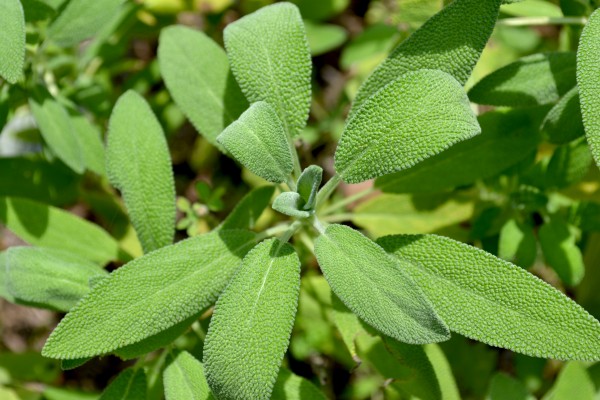
Evolving and Learning with Local Plants
I know that this book will be getting a lot of use in our home, and not just by my husband – it appeals to my desire to do more with less, as in paring down my apothecary and getting to know the potential of a fewer number of herbs in greater depth. One thing that brought me to herbalism was a desire to simplify. I wanted to be able to grow and make the medicine my family needs for daily wellness not only for our health but also to bypass the consumption and waste that goes along with purchasing plastic containers of creams and salves and shampoos and syrups made who-knows-where by who-knows-who. But herbalism can be a slippery slope, too – there are so many wonderful and effective plant remedies, and through the magic of global commerce we can get our hands on so many plants that it can be almost overwhelming.
The thing is, there is no one magic herbal remedy, just like there is no one cure-all food. There is me, and there is my environment, of which I am very much a reflection – could it be that the plants I need to support my wellness are growing and adapting to my ecosystem right along with me? Like the nettle that planted itself in my garden that supports my craving for minerals, or the vigorous Japanese knotweed down the road that fights the infections and symptoms of Lyme disease carried by ticks in our yard? I must admit that as I read the book, the herbs recommended for some of the afflictions were not necessarily the first plants to come to mind for those illnesses, but at the same time were very familiar because they are growing in my gardens and the local fields and meadows and I see and use them routinely. Clearly, I have some more learning to do, and look forward to deepening my relationship with my local plants.
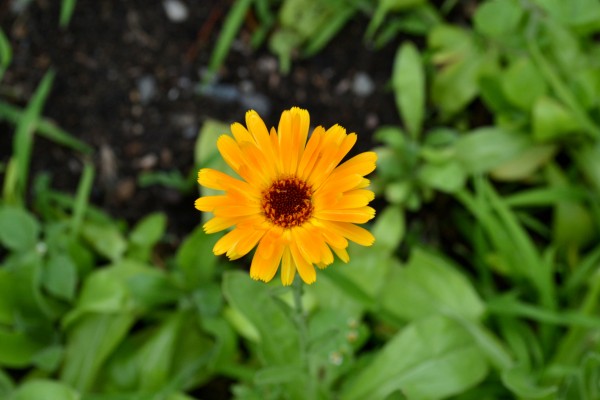
Enter the Heal Local Giveaway!
In partnership with Heal Local and New Society Publishers, we’re giving away one copy of the book to one of our readers! Publisher can be ship book in North America only. Winner must provide a phone number for the courier. Enter the giveaway by using the Rafflecopter app below. You can enter daily by tweeting! The winner will be announced in this post and by email on June 17, 2015. Good luck!

